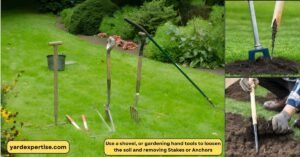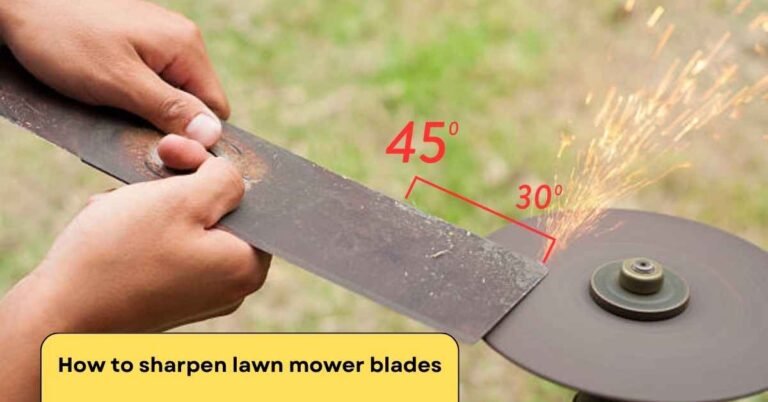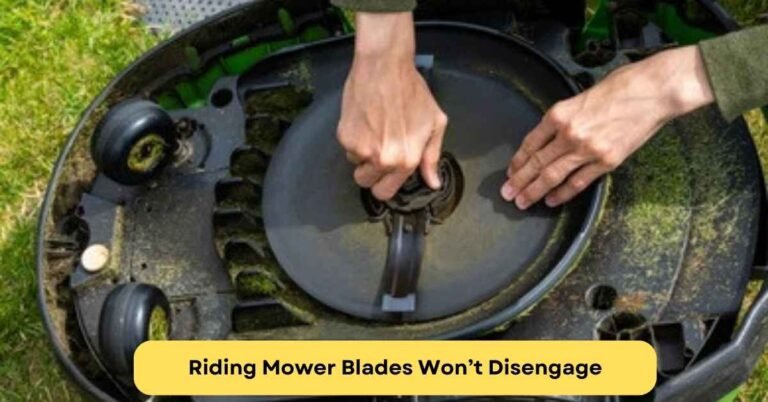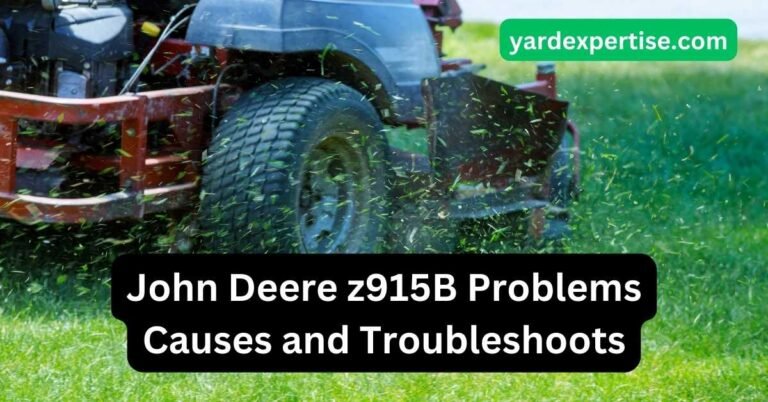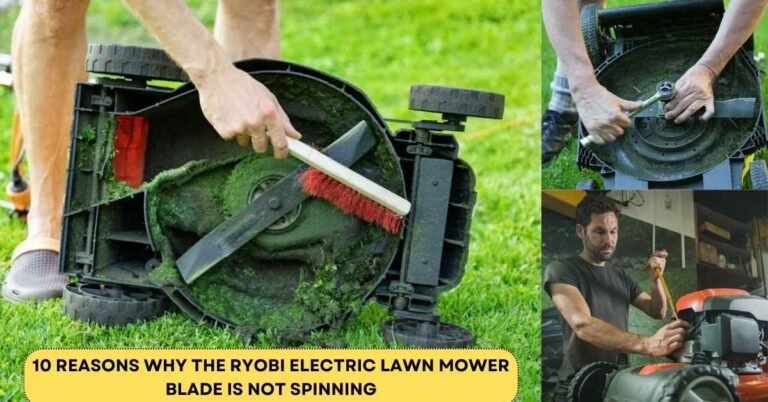How to Remove Plastic Lawn Netting
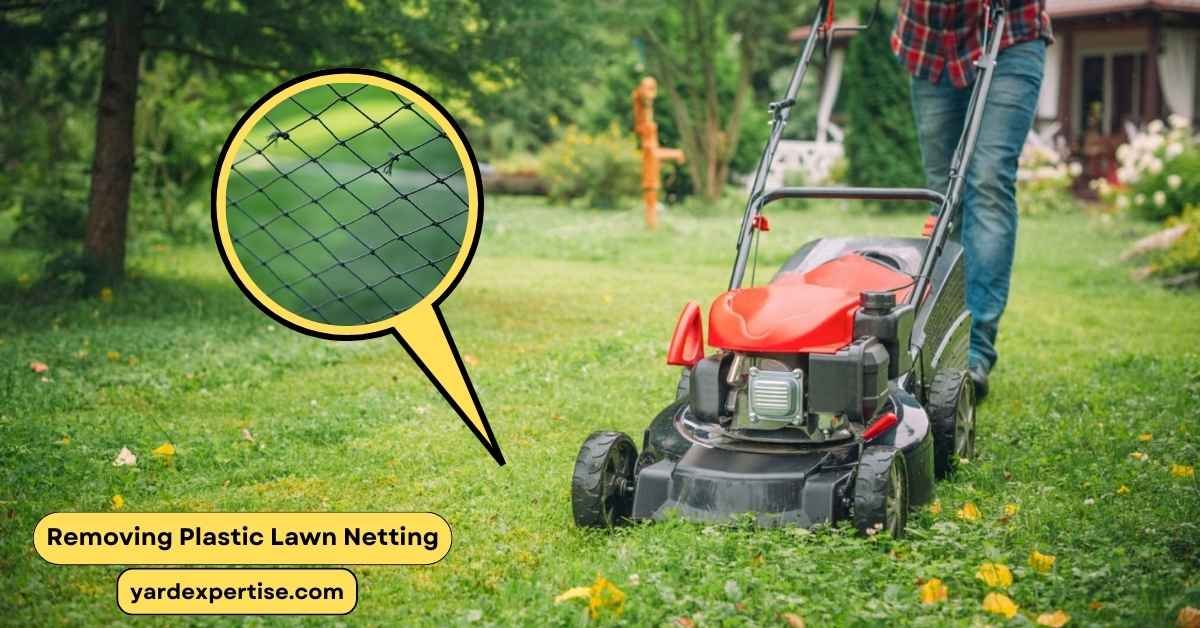
Plastic lawn netting can be a useful tool not only to prevent soil erosion and help the germination of grass seeds but also to prevent squirrels and other animals from digging holes in the ground. Plastic lawn netting provides the lawn with the support it requires to stay fit.
But over time this plastic lawn netting can cause various problems for gardeners or homeowners as the plastic netting is not degradable and can hamper lawn growth. Plastic lawn netting can be quite problematic for planting new seeds and reshaping the lawn and will need removal. In This article we will discuss How to Remove Plastic Lawn Netting.
Plastic lawn netting removal can be a difficult task but with the proper guidelines and tools, it will become easier and readily doable. By following these guidelines, any homeowner will be able to get rid of the plastic lawn netting in their yard and reshape it as they desire.
Step-by-Step Guide How to Remove Plastic Lawn Netting
Plastic lawn netting is usually laid during the process of seeding. The grass can then get a solid base structure upon which it can grow. It reduces the risk of soil erosion where the soil is loose or the climate is rough and windy and helps the seeds grow in a better pattern.
But this plastic lawn netting comes with various ecological concerns as they are not only non-biodegradable meaning it stays in the soil forever ruining its quality over time but it can also cause serious harm to wildlife creatures if they ingest the netting.
This is the reason behind many gardeners and homeowners deciding to get rid of the plastic netting from their lawns for good. It can be a difficult matter to get rid of plastic lawn netting in the lawn but with the right tools and guidance, it can be done correctly. The step-by-step method of removing plastic lawn netting from the lawn is discussed below.
Safety Precautions
Before starting the procedure, some safety precautions should be followed to avoid accidents. Always wear gloves and masks during this procedure because the plastic lawn netting can be sharp in places and can cut through skin and the tilling of the soil will create dust that can cause allergic reactions or respiratory problems if inhaled.
Do not keep the plastic lawn netting exposed as birds, pets, or other animals can mistakenly eat them which can be deadly for them. Make sure to dispose of all of the plastic lawn nets properly in designated areas.

Handle the sharp tools with extra care and caution as they can cause serious injury if handled improperly. Be patient while cutting the nets and avoid cutting them from angles that can cause the tools to accidentally slip and come into contact with your skin and flesh. Keep first aid kits near at all times to ensure better safety.
Tools and Materials
The tools that you will require to get rid of the plastic lawn netting from your yard are a pair of gardening scissors, a rake, a spade and other soil-tilling equipment, and herbicides or a lawnmower to get rid of the grass if necessary.
Clear the Area
The first step of removing the plastic netting from your lawn is clearing the area under which the netting is installed. You will need to use herbicides like Roundup to get rid of all the grass on the lawn if the plastic netting is too deep inside the soil.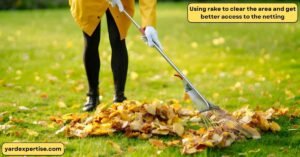
Use a shovel to remove the soil to get access to the netting if the soil is too tight and compact. Use a rake to remove the soil and mulch layer so that you can get better access to the netting. Be extra cautious while using the rake or the shovel to remove the soil and mulch to avoid damaging the plastic netting. Tearing the plastic netting in places can make it more difficult to remove it later as it will snap and break.
Identify the Netting
The next step is identifying the type and condition of the netting to plan how you will be cutting the netting. There are various types of netting that are used on the lawn such as jute netting, stray netting, and plastic netting.
Jute netting and straw netting are bio-degradable and usually do not require cutting or removal. You can use regular gardening scissors to take out these nets as they are not very tough to cut.
Plastic netting on the other hand can be quite durable and hard to cut through. Make sure that your chosen scissors are sharp enough to cut through the plastic netting.
Cut the Netting
Carefully cut the netting on the edges to remove it from the lawn. Make sure to avoid breaking parts of the netting that stay in the soil. Cut the portions that are embedded in the soil tightly. Dig the soil as necessary to make sure that the netting is not buried or else it will be difficult to take out. Handle the plastic netting with care and use gardening gloves to avoid accidentally cutting your hands.
The netting can have stakes or anchors on the corners for better installations. Find these points where the netting is being held with the soil firmly and remove them. Use a spade, shovel, or gardening hand tools to loosen the soil around the stakes or the anchors to make it easy to take out. Be careful not to tear or break the netting.
Roll Up and Dispose
After you have cut the nets in points that were holding them firmly to the ground, you can roll it up. Make sure that all of the soil above the plastic netting is sufficiently loose so that it does not break while pulling it out from the ground. Mark the point where the plastic netting snapped to make it easier to find later.
Dispose of the plastic netting after rolling them up neatly. You can dispose of it with your other plastic waste. Make sure to put it in the trashcan not designated for recyclable materials
Inspect for Residue
Even after careful removal of the plastic netting, some portion of the netting can remain in the soil. Make sure to double-check if there are parts of the netting that got torn during the removal process and take them out. Do not leave any of the netting in the soil as they become problematic in the future.
When to Remove Netting From New Grass?
The best time to remove the plastic netting from the lawn is when the new grass seeds have germinated and the soil is strong enough to survive and flourish without the plastic netting underneath it to work as a support base. You will need to remove the netting earlier if you are using bio-degradable netting such as jute netting or stray netting because they can degrade fast and make it very difficult to remove.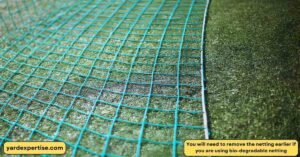
How long does it take for lawn netting to disintegrate?
How long it will take for the lawn netting to disintegrate depends on the material of the net. Jute netting can take up to 2 years to disintegrate completely to the ground while straw netting will take 3-4 months to disintegrate. Plastic netting on the other hand is not bio-degradable and will not disintegrate to the soil for a long time. It might get torn in some places over time or by other animals but it will not fully disintegrate to the soil.
Can you mow over lawn netting?
You can mow over lawn netting only if the netting has gotten deep into the soil and cannot be noticed. Avoid mowing grass if the netting has been installed very recently. Make sure that the netting is completely under the grass and soil and that no portion of the netting is protruding or sticking out of the soil. Mowing over visible plastic netting will not only damage the netting, the soil, and the grass but it can also get tangled with the mower’s blades and cause considerable damage to the machine.
Is grass netting biodegradable?
Grass netting can be biodegradable if made from materials such as Jute or straw because these materials easily decompose over time and disintegrate into the soil. Plastic lawn netting on the other hand is made out of plastic which is not biodegradable and will remain in the soil for hundreds of years without decomposing at all. Using netting made out of biodegradable material is an eco-friendly choice that also increases the fertility of the soil in your lawn.
